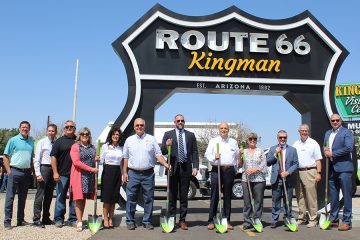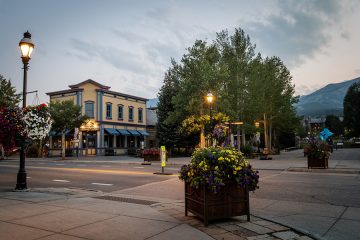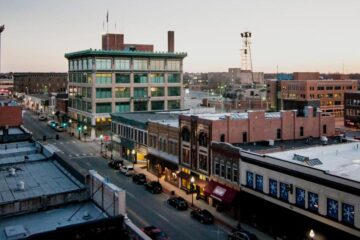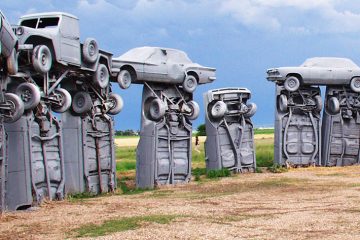Enviamos a una de nuestras Especialistas en Experiencia Digital a acompañar al equipo de instalaciones ALLO Drop Team para conocer de cerca cómo colocamos las líneas temporales de fibra óptica durante los meses de invierno. Obtuvo la experiencia completa e incluso ayudó al equipo a instalar una línea temporal de fibra óptica en un patio. Puede leer más sobre el tema aquí.
Una vez que llegó la primavera, nos unimos nuevamente al Drop Team; esta vez, enviamos a Alyssa a ver cómo nuestro equipo entierra la línea de fibra óptica bajo tierra.
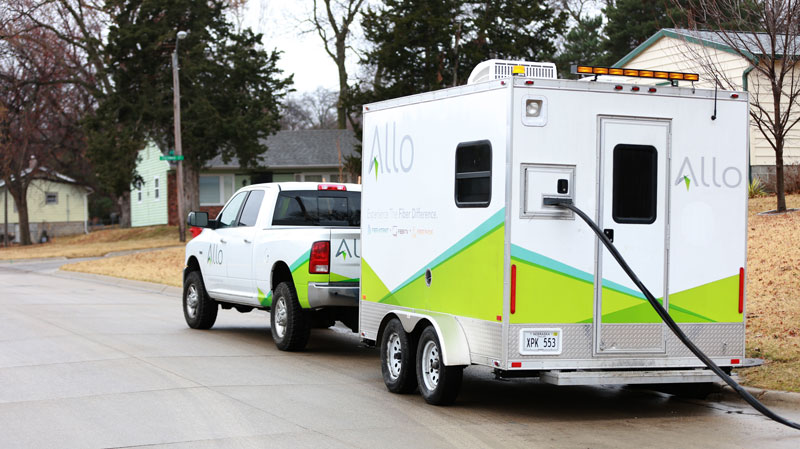
Antes de que llegue el equipo de ALLO para enterrar la fibra, enviamos dos correos electrónicos para avisarle que regresaremos a su propiedad. Poco después, realizamos una llamada telefónica para explicarle que aparecerán banderas y marcas en el césped indicando la ubicación de los servicios existentes. Al llegar, tocamos la puerta para explicarle el proceso y dejamos información de contacto en caso de que surjan dudas. Si no se encuentra en casa, dejamos la información en su puerta.
Durante la primera instalación del día, el pedestal se encontraba justo detrás de la cerca del cliente. Usando una máquina de arado vibratorio, excavamos un pequeño trayecto por debajo de la cerca para pasar el conducto al patio. Este arado es similar al que se usa para instalar sistemas de riego. Funciona como una máquina de coser, creando pequeñas “puntadas” (de 8 a 12 pulgadas) en el suelo. En algunos casos, usamos otra máquina si necesitamos trabajar alrededor de concreto o piedra.
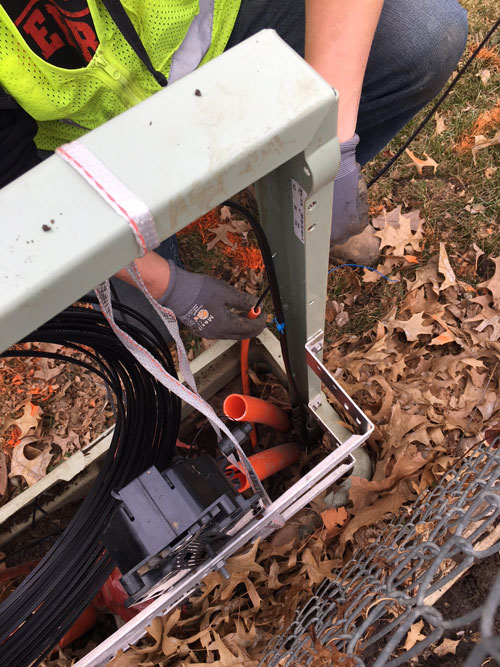
Después, abrimos una pequeña sección del terreno, y la máquina inserta el conducto (conduit) en ese espacio. Este conducto, llamado microducto, tiene el tamaño aproximado de un dedo. Después, pasamos la máquina nuevamente sobre esa área para nivelar el pasto y la tierra con el resto del jardín. Luego colocamos semilla sobre la cicatriz en el césped. Siempre que el área reciba riego regular, esta interrupción será casi invisible.
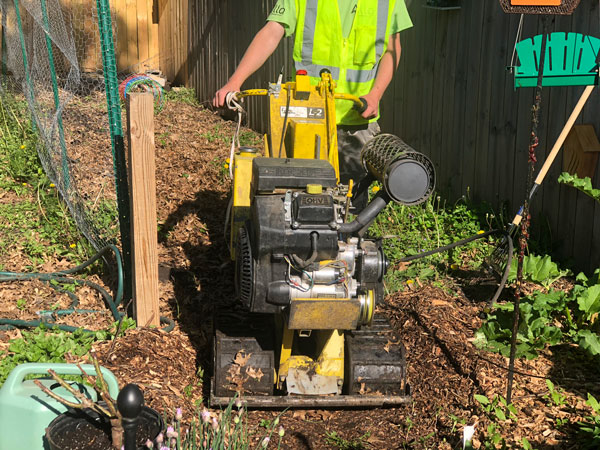
En este punto, el equipo desconecta la línea de fibra óptica temporal de la caja de servicio. El servicio de ALLO se interrumpe por aproximadamente cinco minutos mientras se empalma la nueva línea subterránea, se prueba la conexión y se activa el nuevo servicio permanente. Alyssa cronometró el proceso completo, que duró unos 30 minutos. El equipo explicó que cada instalación es diferente, y el tiempo que lleva depende en gran medida del tamaño del jardín y de la distancia entre el pedestal y su hogar. A veces, el pedestal puede estar a 3 o 4 casas de distancia
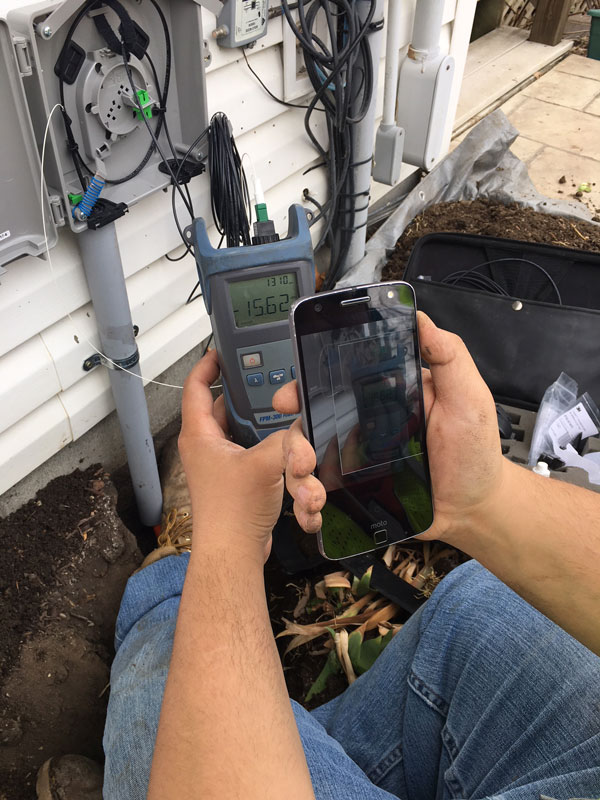
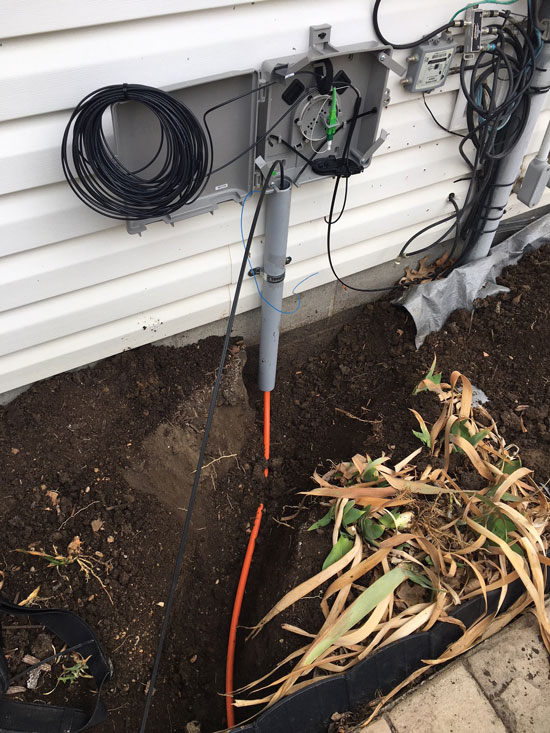
Mientras el suelo no esté húmedo ni congelado, nuestro equipo de instalación de fibra óptica estará enterrando las líneas. La interrupción más común es el mal tiempo. Es difícil empalmar la fibra cuando hace demasiado frío. Y si está demasiado húmedo, evitamos excavar en los patios para mantener el césped y los jardines en óptimas condiciones. Una puerta cerrada también puede retrasar el proceso varios días o semanas. Por lo tanto, si ha recibido las notificaciones por correo electrónico y teléfono, le recomendamos abrir la puerta o intentar estar en casa durante el entierro, si es posible.
Sabemos que nuestros clientes cuidan mucho de sus hogares y jardines, por eso hacemos todo lo posible para que nuestro trabajo sea mínimamente invasivo. Si podemos correr la línea de fibra a lo largo de una cerca, lo haremos. Cuando instalamos la caja de interfaz de fibra en su hogar, nuestra primera opción es colocarla cerca del medidor eléctrico. Si eso no es posible, la colocamos junto a la unidad de aire acondicionado. Como última opción, la instalamos cerca de los servicios públicos existentes.
Si tiene alguna pregunta o inquietud sobre este proceso, nuestro equipo local estará encantado de ayudarle. Puede llamarnos al 866-481-2556 o visitar www.allofiber.com/construction para ponerse en contacto con nuestro equipo de construcción.






